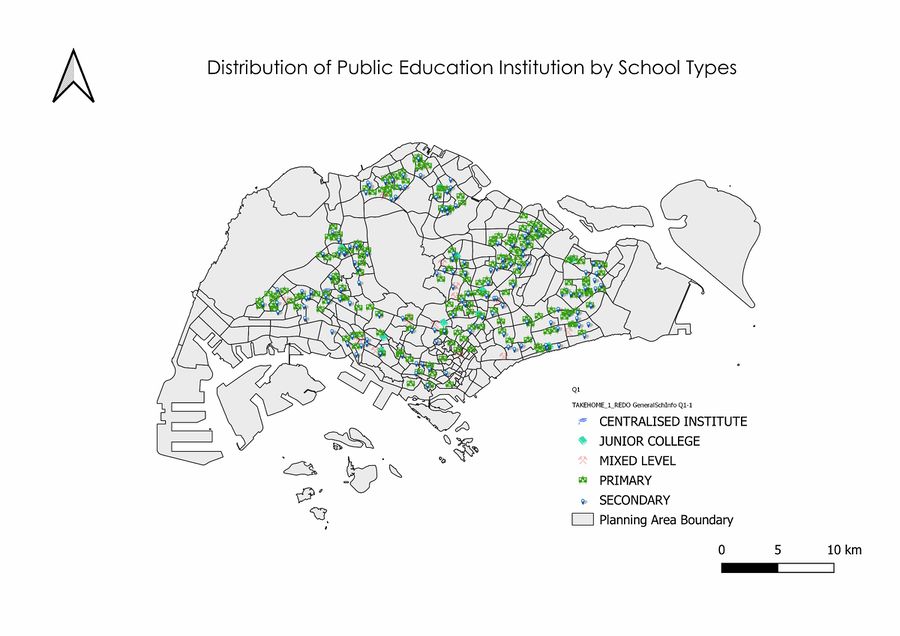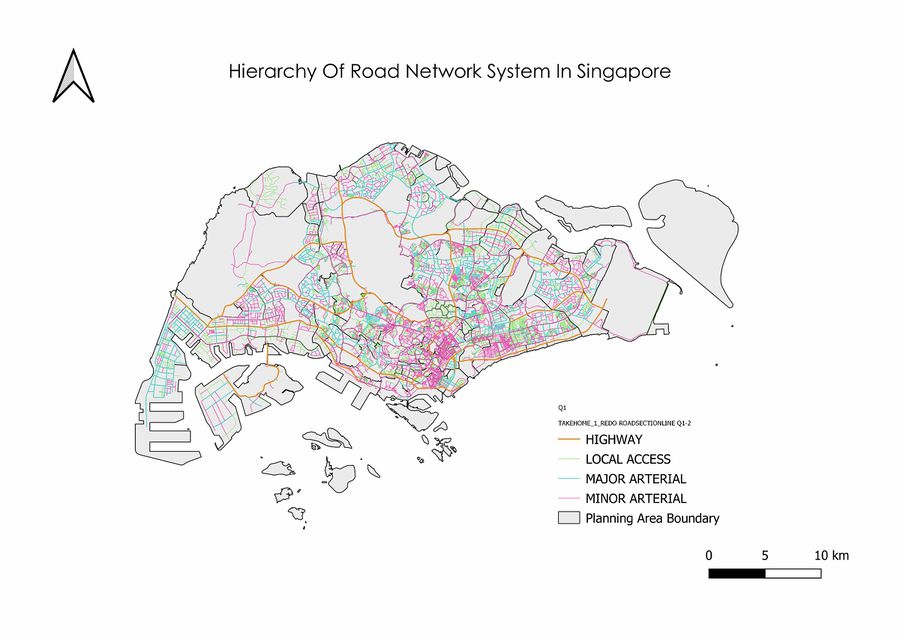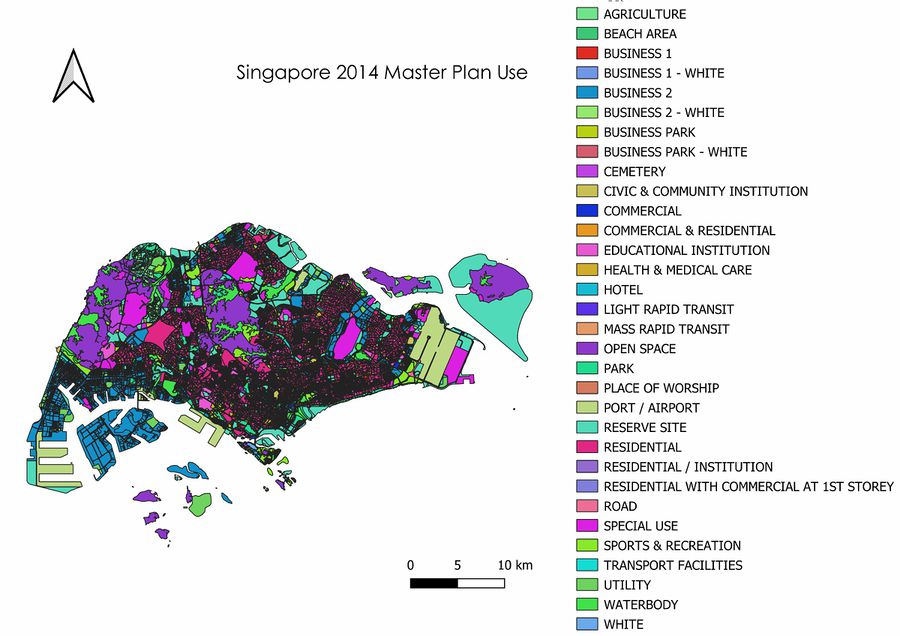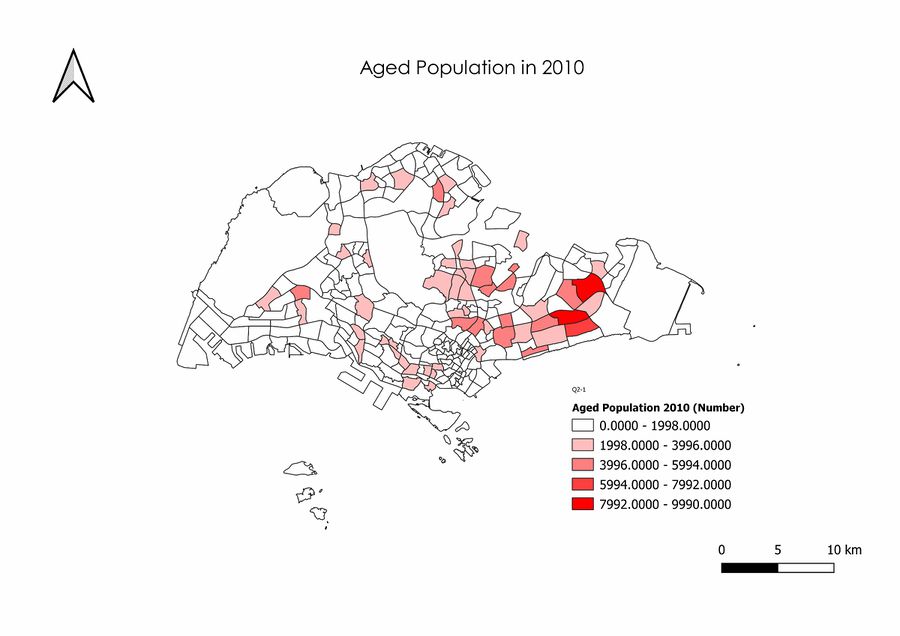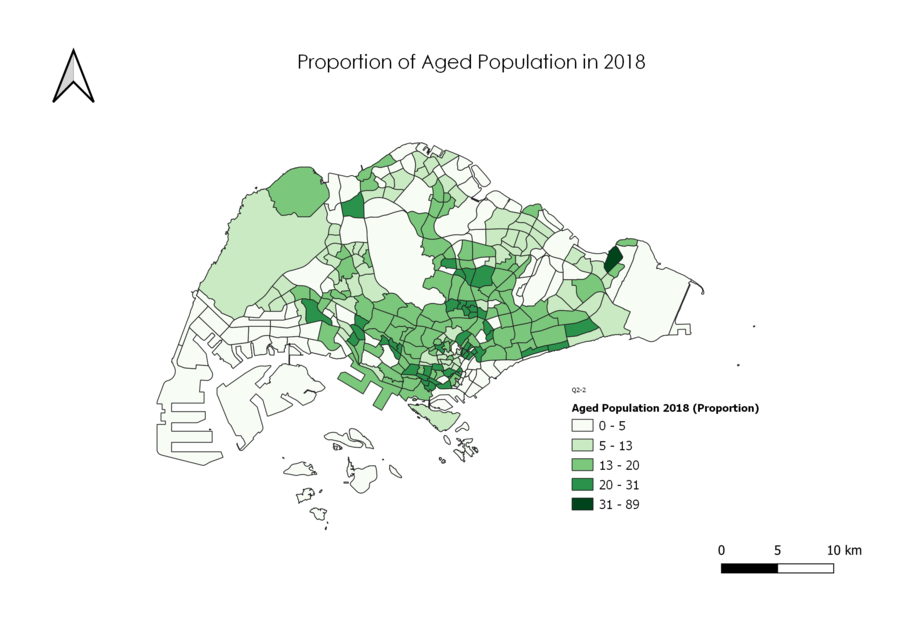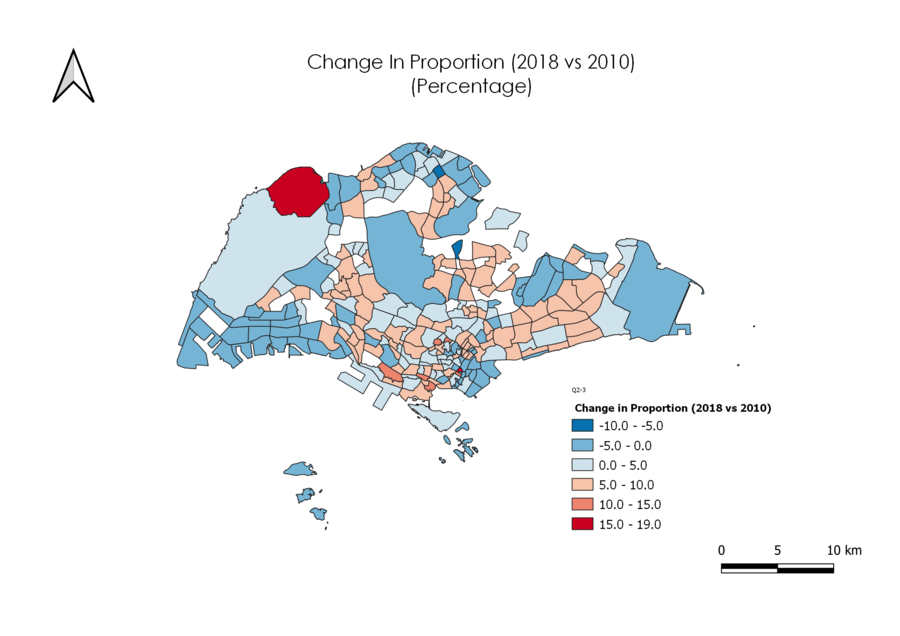SMT201 AY2019-20G1 EX1 Lim Shi Xian Alvin
Part 1: Thematic Mapping
Distribution of Public Education Institution by School Types
Source: General Information Of School [1]. Master Plan 2014 Subzone Boundary [2].
To properly depict the public education institution of Singapore, I used the mainlevel_ attribute column to categorise each unique point on the map. With the mainlevel_ column, I was able to uniquely identify each type of public institution, such as primary schools, secondary schools, junior colleges etcetera. I've used the inbuilt SVG markers in QGIS to better differentiate the markers instead of the default simple dots and used a grey background to accentuate the colours of the markers.
Road Network System Hierarchy of Singapore
Source: Road Section Line [3] Master Plan 2014 Subzone Boundary [4].
I downloaded the shapefile from mytransport.sg and proceeded to import it into QGIS, and discovered that all the road names are mapped out inside the attribute table. As such, my approach was to follow URA handbook guidelines to classify them to their respective category. I did not include a case for Primary Access Road due to the fact that they share overlapping naming conventions with "Local Access". In terms of visual representation, the width of a road is representative of its class. Highways will be the thickest as it is the broadest in the real world, and vice-versa. I used the following code to classify it:
CASE WHEN "RD_CD_DESC" LIKE '%HIGHWAY%' THEN 'HIGHWAY' WHEN "RD_CD_DESC" LIKE '%EXPRESSWAY%' THEN 'HIGHWAY' WHEN "RD_CD_DESC" LIKE '%PARKWAY%' THEN 'HIGHWAY' WHEN "RD_CD_DESC" LIKE '%BOULEVARD%' THEN 'MAJOR ARTERIAL' WHEN "RD_CD_DESC" LIKE '%AVENUE%' THEN 'MAJOR ARTERIAL' WHEN "RD_CD_DESC" LIKE '%WAY%' THEN 'MAJOR ARTERIAL' WHEN "RD_CD_DESC" LIKE '%DRIVE%' THEN 'MINOR ARTERIAL' WHEN "RD_CD_DESC" LIKE '%ROAD%' THEN 'MINOR ARTERIAL' WHEN "RD_CD_DESC" LIKE '%STREET%' THEN 'MINOR ARTERIAL' ELSE 'LOCAL ACCESS' END
2014 Master Plan Landuse Singapore
Source: Master Plan 2014 Land Use [5]
I downloaded the shapefile and imported it into QGIS. I then scanned through the attribute table and realised that LU_DESC could be used to classify each individual segment. As there were many segments, upon allowing random classification of colour, the visualization was a horrendous mess due to the sheer amount of colours that were too similar with each other. As such, I tried to ensure that there was adequate contrast between each colour by changing its representation, with limited success.
Part 2: Choropleth Mapping
Aged Population (+65) in 2010 and 2018
Source: Geographic Distribution [6] Master Plan 2014 Subzone Boundary [7].
The amount of aged has increased in general. The aged seem to have been reduced in central areas. However, the northeast areas of Singapore seemed to have ballooned with more aged residents. The same could be said for the west of Singapore, albeit with less intensity.
Proportion of Aged Population in 2010 and 2018
Source: Geographic Distribution [8] Master Plan 2014 Subzone Boundary [9].
As per the visual above this, the amount of aged population has increase. However, it is interesting to note that the aged are more evenly spread out in 2018 as compared to 2010.
Percentage Change of Aged Population between 2010 and 2018
Source: Geographic Distribution [10] Master Plan 2014 Subzone Boundary [11].
From the above, one could observe that there is a fair ebb and flow of aged proportions across all parts of Singapore, with a spot near woodlands having a spike in aged proportions.
Discussion
The main objective of all layouts is to ensure that each data is mapped out as clearly as possible. Colours have to be of great contrast with each other (for thematic mapping) and markers to be tied to a symbolic representation to make it easier for a reader to identify legends at first glance. Choropleth maps colours are mapped to blue and red to represent good and bad. In the case of the aged population, it would be easier for one to link red with something bad (a rise in aged proportion) and blue with something good (a decrease in aged proportion). As the data I downloaded isn't always in the format that I want, or will cause issue when directly imported to QGIS, I had to juxtapose all the data into the same format as the ones in the shapefiles I want to map into. After doing so, I imported it into QGIS and used the join function within it to link them together. However, doing so do yield certain invalid data. As such, I interpolated the data and removed invalid entries. Although I do get lesser data at the end, I ensure that what I have is accurate. When there is a need for a calculated field, I would use QGIS's field calculator to execute the necessary operations. Classification is also done via the field calculator as seen from above (see CASE code).
